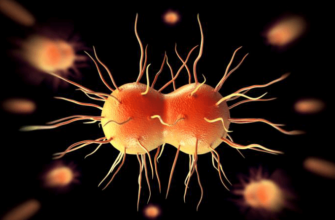BUN Creatinine Ratio Calculator: Understanding and Interpreting Kidney Function
Have you ever wondered how doctors assess kidney function? One of the essential tools they use is the BUN creatinine ratio. In this article, we will delve into the world of kidney health and explore the significance of the BUN creatinine ratio. Whether you’re a medical professional or simply curious about your own kidney health, understanding this ratio can provide valuable insights. So, let’s dive in!
Introduction
The BUN creatinine ratio is a laboratory test that measures the relationship between two key substances in the blood: blood urea nitrogen (BUN) and creatinine. These markers play crucial roles in evaluating kidney function and overall health. By calculating the BUN creatinine ratio, healthcare providers can gather valuable information about a person’s hydration status, kidney health, and potential underlying medical conditions.
Understanding BUN and Creatinine
Before we delve deeper into the BUN creatinine ratio, it’s important to understand the individual components. BUN, or blood urea nitrogen, is a waste product that results from protein metabolism in the liver. It is carried in the bloodstream and filtered by the kidneys for excretion in the urine. Creatinine, on the other hand, is a waste product generated by muscle metabolism. Both BUN and creatinine are measured in milligrams per deciliter (mg/dL) and serve as important indicators of kidney function.
What Is the BUN Creatinine Ratio?
The BUN creatinine ratio is a numerical value that represents the relationship between BUN and creatinine levels in the blood. It is calculated by dividing the BUN value by the creatinine value. For example, if a person has a BUN level of 20 mg/dL and a creatinine level of 1 mg/dL, the BUN creatinine ratio would be 20:1.
Interpreting the BUN creatinine ratio requires an understanding of the reference ranges and the context in which the test is performed. Typically, the normal range for the ratio falls between 10:1 and 20:1. However, variations can occur based on factors such as age, sex, and underlying medical conditions.
Significance of the BUN Creatinine Ratio
The BUN creatinine ratio is a valuable tool for assessing kidney function and overall health. It provides insights into various aspects, including hydration status, kidney function, and potential underlying medical conditions. By understanding the significance of the ratio, healthcare providers can make informed decisions regarding diagnosis, treatment, and monitoring.
Kidney function: The BUN creatinine ratio is widely used to evaluate kidney function. Changes in the ratio can indicate potential kidney problems, such as impaired filtration or reduced blood flow to the kidneys. It helps in the early detection of kidney diseases and allows for timely intervention.
Hydration status: The BUN creatinine ratio is also a useful marker for assessing hydration status. Dehydration can lead to an increase in BUN levels, resulting in a higher ratio. By monitoring the ratio, healthcare providers can determine if a person is adequately hydrated or if further intervention is needed.
Relation to medical conditions: The BUN creatinine ratio can be associated with certain medical conditions. For example, a high ratio may indicate conditions such as dehydration, congestive heart failure, or gastrointestinal bleeding. On the other hand, a low ratio can be a result of liver disease or a low protein diet. It serves as a clue for healthcare providers to explore potential underlying causes.
How to Interpret the BUN Creatinine Ratio
Interpreting the BUN creatinine ratio involves analyzing both high and low values in relation to the reference range and clinical context. Here are some key points to consider:
High BUN creatinine ratio: An elevated ratio may indicate dehydration, kidney dysfunction, or certain medical conditions. However, it is important to interpret the ratio in conjunction with other clinical findings and perform additional tests to determine the underlying cause.
Low BUN creatinine ratio: A low ratio can be an indicator of liver disease, a low protein diet, or certain medical conditions. As with a high ratio, healthcare providers should consider the clinical context and conduct further investigations if necessary.
Factors affecting the ratio: It’s important to note that the BUN creatinine ratio can be influenced by various factors. These include age, diet, medications, and underlying health conditions. Considering these factors is crucial when interpreting the ratio and making accurate assessments.
BUN Creatinine Ratio Calculator
To simplify the calculation of the BUN creatinine ratio, healthcare providers and individuals can use a BUN creatinine ratio calculator. This online tool requires inputting the BUN and creatinine values obtained from a blood test. The calculator then provides the ratio, enabling users to interpret the results accurately.
Using the BUN creatinine ratio calculator is simple. First, gather your BUN and creatinine values from a recent blood test. Then, input the values into the calculator, which will promptly provide you with the ratio. This user-friendly tool saves time and ensures accurate calculations.
Clinical Applications and Limitations
The BUN creatinine ratio finds clinical applications in various medical scenarios. It aids in the assessment of kidney function, monitoring hydration status, and diagnosing certain medical conditions. However, it is essential to acknowledge the limitations of the ratio.
For instance, the BUN creatinine ratio should not be solely relied upon for a definitive diagnosis. It is a complementary tool that needs to be considered alongside other clinical findings, medical history, and additional diagnostic tests. Factors such as diet, medications, and underlying health conditions can influence the ratio, leading to potential misinterpretation.
Tips for Maintaining a Healthy BUN Creatinine Ratio
Maintaining a healthy BUN creatinine ratio is important for overall kidney health and general well-being. Here are some tips to help you achieve and maintain a balanced ratio:
- Hydration and water intake: Drink an adequate amount of water throughout the day to maintain proper hydration. Staying hydrated helps ensure optimal kidney function and a balanced BUN creatinine ratio.
- Dietary recommendations: Consume a balanced diet that includes a variety of fruits, vegetables, lean proteins, and whole grains. Avoid excessive protein intake, as it can increase BUN levels and affect the ratio. Consult a healthcare professional or a registered dietitian for personalized dietary recommendations.
- Lifestyle factors: Incorporate regular physical activity into your routine. Exercise promotes blood circulation, which can have a positive impact on kidney function. Additionally, avoid smoking and excessive alcohol consumption, as these habits can negatively affect kidney health.
Frequently Asked Questions (FAQs)
FAQ 1: What are the common causes of a high BUN creatinine ratio?
A high BUN creatinine ratio can be caused by various factors, including dehydration, kidney disease, urinary tract obstruction, and certain medications. It is important to consult a healthcare professional for a thorough evaluation if you have an elevated ratio.
FAQ 2: Can medications affect the BUN creatinine ratio?
Yes, certain medications can affect the BUN creatinine ratio. Medications such as diuretics, ACE inhibitors, and NSAIDs may impact kidney function and alter the ratio. Always inform your healthcare provider about any medications you are taking to ensure accurate interpretation of the ratio.
FAQ 3: Is a low BUN creatinine ratio always a cause for concern?
Not necessarily. A low BUN creatinine ratio can be a result of a low protein diet, liver disease, or other underlying conditions. It is crucial to consider the clinical context and perform additional tests to determine the cause of the low ratio.
FAQ 4: How often should I check my BUN creatinine ratio?
The frequency of checking the BUN creatinine ratio depends on your individual health status and medical history. Your healthcare provider will determine the appropriate interval for monitoring based on your specific needs.
FAQ 5: Are there any risks associated with a BUN creatinine ratio test?
A BUN creatinine ratio test is a simple blood test and carries minimal risks. Some individuals may experience slight discomfort or bruising at the site where blood is drawn. However, these risks are minimal compared to the valuable information that can be gained from the test.
Conclusion
The BUN creatinine ratio is a valuable tool for assessing kidney function, hydration status, and potential underlying medical conditions. By understanding the significance of this ratio, healthcare providers and individuals can make informed decisions regarding diagnosis, treatment, and monitoring. Remember to interpret the ratio in conjunction with other clinical findings and consult a healthcare professional for personalized guidance. By maintaining a healthy BUN creatinine ratio through proper hydration, diet, and lifestyle choices, you can promote optimal kidney health and overall well-being.












